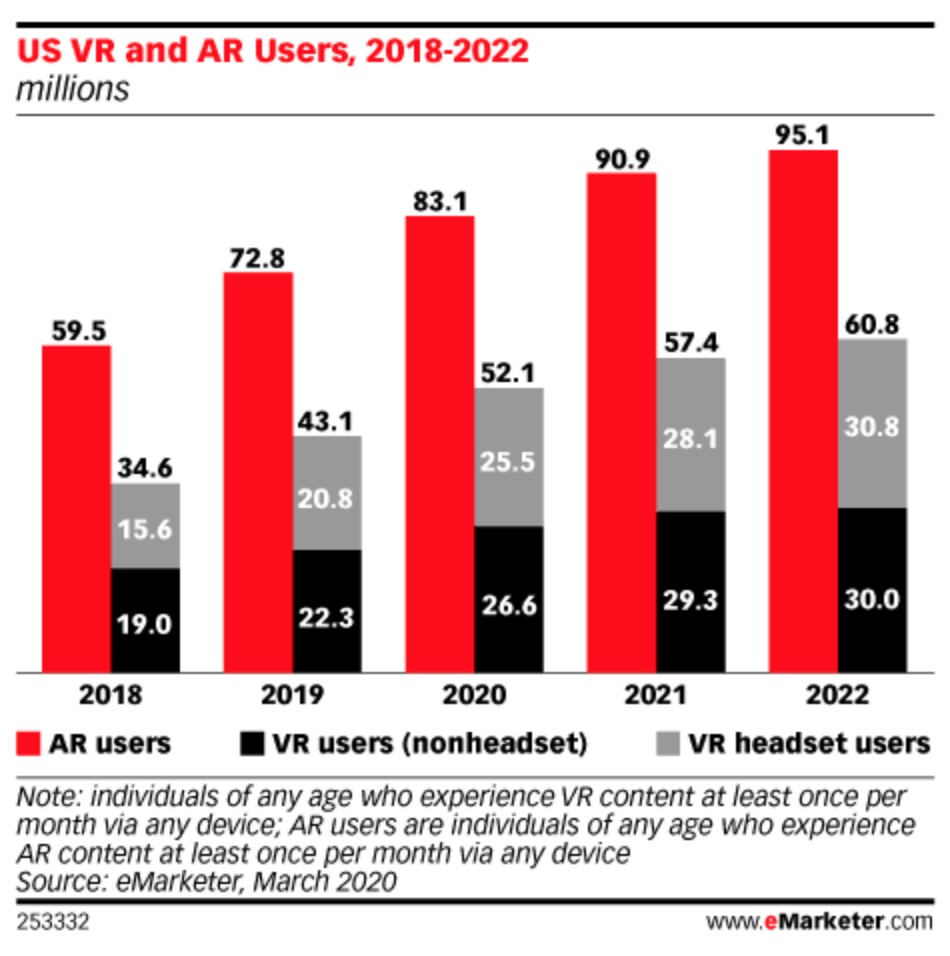Business
AR/VR Investing: How Zadar Ventures leverages XR technology to shape our post COVID-19 world
Zadar Ventures Ltd. (TSXV: ZAD, OTC: ZADDF) acquisition target XRApplied is leading the way in developing extended reality technology solutions for businesses that want to adapt and rebuild in the aftermath of the COVID-19 pandemic.

Augmented reality (AR), virtual reality (VR), and mixed reality (MR) all fall under extended reality (XR). They have been around for a while, but it wasn’t until the height of the coronavirus pandemic that the spotlight was turned once again to these technologies. Most of our society found new applications for them that proved beneficial—from those who used VR to hold conferences in order to meet social distancing requirements to those who found entertainment in AR to pass the time while in quarantine, for example. XRApplied, an acquisition target of Zadar Ventures Ltd. (TSXV: ZAD, OTC: ZADDF) has long believed that XR technology will disrupt industries all over the world. It seems that time has now come.
There is prevailing uncertainty as we grapple with the effect COVID-19 has had in our lives—but if there’s one thing that has been made apparent, it is that technology plays a huge and significant role in how we will survive and move forward. There is no other recourse but to go digital, and this transformation is key in improving our personal lives, our business practices, and our socio-economical needs.
Adopting XR solutions
As an immersive technology, XR blends our real, physical world with the virtual, submerging us in new experiences that we would never think was possible. It is a market that is poised for rapid growth in the coming years—with a projected value of $18.8 billion and global consumer spending at $7 billion for this year.
In the U.S. alone, there are around 52.1 million people forecasted to utilize VR, or 15.7% of the population. Meanwhile, AR has around 25% or 83.1 million users who will use the technology at least once a month.

VR is most prominently enjoyed with a headset as the user is introduced to an artificial environment. The gaming industry has a leg up in this regard, with beautifully designed games such as Iron Man VR, where you get to feel what it’s like to be Tony Stark inside his famous red combat armor. There are also the likes of Half-Life: Alyx, Resident Evil 7: Biohazard, The Elder Scrolls V: Skyrim VR, Doom VFR, Fallout 4 VR, and Five Nights at Freddy’s: Help Wanted, among others.
Game publishers continue to push for more VR titles in their storefronts, such as Sony (NYSE: SNE)’s PlayStation Network and Facebook (NASDAQ: FB)’s Oculus Rift. And why not—at the beginning of the year, it was reported that more than 100 games have surpassed the $1 billion revenue mark. There are also over 68 million headset units expected to be shipped globally. This hasn’t escaped the attention of Microsoft (NASDAQ: MSFT) and Intel (NASDAQ: INTC), who are both said to be investing now in XR technology, too.
Apart from gaming though, XRApplied believes that VR can be made accessible to different sectors, eventually becoming an integral part of our everyday lives. A company who has worked with brands like Duo and Step 2, it is at the forefront of bringing VR and AR to the mass market as well as SMEs. It has in its arsenal a constructed standardized VR and AR frameworks, which businesses can easily customize, giving way to a truly platform-agnostic XR ecosystem.
VR can be used for training and learning in the medical field, for example, first responders who are preparing for worst-case emergency situations. By reproducing high-risk areas in VR at 1:1 ratio using scanners and photogrammetry, a course can be designed to simulate a real-world disaster.
Tourism, recruitment, meetings and conferences are also areas where VR can be put to good use. Even real estate can be an interactive digital experience with VR home tours.
As for AR, the technology makes use of the existing environment while overlaying new information on top of it. The most known example perhaps is Pokémon GO by Nintendo (OTC: NTDOY), where the AR feature allows you to see the Pokémon characters right in front of you, in your real-world surroundings. The beloved game creator’s value soared to more than $40 billion after the game’s release. To date, it remains one of the most influential apps in history ever to successfully employ AR and expand what we know about physical spaces and dimensions.
The healthcare industry has also found notable uses for AR, specifically those who are studying how to use complex equipment or how to perform surgeries. Medical students are also applying it to anatomy and discovering the human body in a more interactive way compared to just reading it in textbooks.
XRApplied has also shown how AR can be implemented in a retail setting—a digital catalog, for instance, can help bridge the gap between online and offline. Customers can browse for products, compare prices, or look up more information via their smartphones.
Home design is another avenue where AR can be explored. By pointing the camera of your phone on a specific area or space, through an AR-enabled app you can browse different swatches of paint for the walls and see it come to life, or even different kinds of wood for the floor, or perhaps place furniture of your choice to see if it would fit the interiors.
Not to be outdone by VR, mobile AR is predicted to have 2.4 billion users by 2023. The market is certainly growing, and will be valued at $18 billion in three years’ time. The arrival of 5G is also seen as a factor that would only serve to move XR technology forward.
Connection instead of isolation
COVID-19 has remarkably reduced our physical and social interactions with one another, but it doesn’t have to remain that way. XR technology provides us with an opportunity to reinforce human connections, and rebuild businesses and institutions into stronger entities that can survive and endure a pandemic.
If there’s anything that the coronavirus has taught us, it’s that we can manage and live in a digital world. We must continue to experiment and collaborate—using XR and adapting it to our current practices will help us overcome the challenges of the new normal.
—
(Featured image by Mediamodifier via Pixabay)
DISCLAIMER: This article was written by a third party contributor and does not reflect the opinion of Born2Invest, its management, staff or its associates. Please review our disclaimer for more information.
This article may include forward-looking statements. These forward-looking statements generally are identified by the words “believe,” “project,” “estimate,” “become,” “plan,” “will,” and similar expressions. These forward-looking statements involve known and unknown risks as well as uncertainties, including those discussed in the following cautionary statements and elsewhere in this article and on this site. Although the Company may believe that its expectations are based on reasonable assumptions, the actual results that the Company may achieve may differ materially from any forward-looking statements, which reflect the opinions of the management of the Company only as of the date hereof. Additionally, please make sure to read these important disclosures.

-

 Africa1 week ago
Africa1 week agoBank Al-Maghrib’s Final 2025 Meeting Expected to Maintain Key Interest Rate
-

 Crowdfunding2 weeks ago
Crowdfunding2 weeks agoOpstart Unifies Crowdlender: A Streamlined, Wallet-Free Investment Hub Launches December 2025
-

 Africa3 days ago
Africa3 days agoMorocco Allocates 1.3 Billion Dirhams to Boost Startup Ecosystem Under Digital 2030 Strategy
-

 Crowdfunding1 week ago
Crowdfunding1 week agoStar Citizen Funding Soars as 2025 Becomes Its Most Successful Year Yet

























